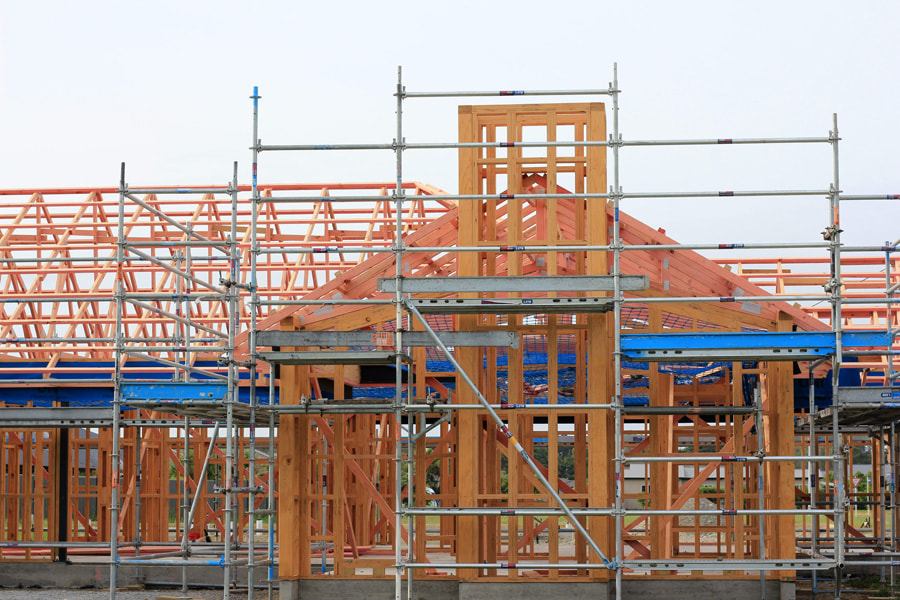The next cab off the rank showing housing market weakness will be the number of consents issued for new dwellings to be built. These tend to closely follow changes in sales with a small lag and on top of that traditional relationship there are other special factors in play. None of them are good news for those working in the building sector.
Supplies of building materials are hard to find and that says to buyers that they can have little confidence in their project being completed on time. In addition, construction costs have risen near 20% in the past year and costs continue to rise. A house which a year ago cost $1 mn to build would now cost over $1.2mn. A year from now it may cost almost $1.4mn.
This is actively disincentivizing people from ordering a new build. But there is more. The number of existing properties sitting on the market hoping for a buyer has risen by 80% over the past year. Buyers have more and more existing properties to choose from and with the prices of these houses going down while the prices for new builds escalate, the incentive to buy used is rising rapidly.
In fact, the price difference between the two options looks to have changed some 30% over just the past year.
For the rest of this year activity levels in the home building sector will remain strong as existing projects are completed. But from the first half of 2023 we are likely to see the start of a decline in house building activity which could easily last 2-3 years if not longer.
This is important information. It tells us that while in Auckland concerns are growing about a potentially over-supply of townhouses, such concerns are not likely to last all that long. In the Australian capital cities, there is a tendency for far greater attention to be paid to periods of supply excess which can quickly turn to periods of under-construction. We are likely to see a similar thing in our biggest city play out over the next three years.
Once house construction is falling there will be a tendency in some quarters to focus on housing woe and this will deliver extra downside to prices. But I suspect things might look quite different from the latter part of 2023 once the focus shifts towards inadequate construction. This will be one factor which could contribute to a price recovery of small magnitude late in 2023 but more likely through 2024.
The biggest factor however is likely to be the fact that a year from now prices are likely to be up to 10% lower than they are now, and many people will consider properties to be looking far more affordable. Assisted by high job security despite a period of weak economic growth, a property recovery may occur.
A key factor underlying this is the speed with which monetary policy has been tightened this cycle. The last time the Reserve Bank embarked on a sustained period of tightening it took over three years for fixed mortgage rates to rise by about 3%. This time we have seen rises of 3% - 3.5% in the space of 14 months.
This rapid policy tightening has added to the shock effect of the credit crunch from late last year and the more recent impact of soaring cost of living expenses.
The downward part of New Zealand’s housing cycle is being condensed into a relatively short period of time by a range of factors and the faster average prices fall, the sooner they will bottom out. A contributing factor to things eventually stabilising will be an end to further mortgage rate rises.
We may not be there yet. But further increases for all but the popular one year term are likely to be very small. The outlook implies that fixing for periods longer than two years could be a high cost alternative and we may not be far from the most popular period once again becoming one year.
Once attention starts turning to interest rates edging lower, then a few buyers will start to come out of the woodwork.
Already I can see from my monthly survey of real estate agents undertaken with REINZ a rising proportion of investors who are looking to buy saying they are hopeful of finding a bargain. But if bargains do appear they are far more likely to be in the form of discounted prices for partly-build dwellings being sold by banks rather than average existing houses.
There continues to be zero evidence of any wave of investors selling, and in fact a monthly survey I run of property investors is showing decreasing intentions to sell. That may reflect worries about falling prices for other assets, low returns on bank deposits, and the fact most investors are in the business for the long run. With a shortage of rental accommodation around the country they can relatively easily find tenants to deliver them a cash return.
The upshot of all of this is that the housing cycle is well into the falling portion of its path and the bottom is likely to come sooner than people think – though at levels still a bit weaker than we have now. Prices might have another 5% - 10% to decline on average, sales in annual terms may fall below 65,000, while annual consent numbers have capacity to fall from the recent peak of almost 51,000 to near 30,000.
Go to www.tonyalexander.nz to subscribe to my free weekly “Tony’s View” for easy-to-understand discussion of wider developments in the NZ economy, plus more on housing markets.
By Tony Alexander



